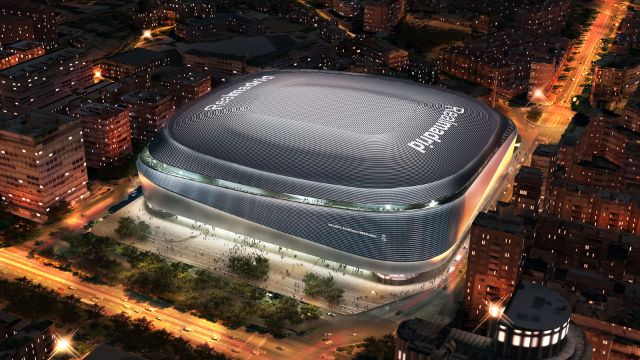There is a lesson or two Nigerian clubs and indeed Nigerian governments at the national and states level can learn from the financing mix applied by the biggest football club in the world to build stadia that are world-class and breathtaking.
Unarguably, Real Madrid CF is the biggest football club in the world of football and they didn’t get there by mere wishful thinking as the account below illustrates.
The Los Blancos have accumulated so much success over the years that they can boast of 68 domestic trophies in Spain, 21 European trophies, and a record seven club world championships for themselves.
Asides from the success in terms of trophies, they’re the most valuable football club side in the world with the team valued at around $5.1 billion.
No wonder Florentino Perez, the club’s President can be so confident of getting any player they are interested in, as they can boast of trophies and also huge financial value.
In 2017, the Club planned a renovation of its 75-year Old stadium, the Santiago Bernabeu, but financing was slow to come together.
Construction eventually began in 2019, but the COVID-19 pandemic happened and the club postponed the inauguration of the iconic stadium till the 2023-24 season.
Brief History of The Santiago Bernabeu
The Santiago Bernabeu is the second-largest stadium in Spain after Camp Nou, the home ground of FC Barcelona, with a current seating capacity of 81,044.
The stadium was named after ex-player and legendary Real Madrid President, Santiago Bernabeu, who was president of the club between 1943 – 1978.
It’s one of the world’s most famous football venues. The stadium has hosted the final of the European Cup/UEFA Champions League on four occasions (1957, 1969, 1980, 2010).
The stadium also hosted the second leg of the 2018 Copa Libertadores Finals, making Santiago Bernabéu the first (and only) stadium to host the two most important premier continental cup finals (UEFA Champions League and Copa Libertadores).
The final matches of the 1964 European Nations’ Cup and the 1982 FIFA World Cup were also held at the Bernabéu, making it the first stadium in Europe to host both a UEFA Euro final and a FIFA World Cup final.
The stadium was inaugurated on 14 December 1947 with a match between Real Madrid and Portuguese side, Os Belenenses.
The New Bernabeu: Not Your Regular Stadium
The new Bernabeu stadium comes with a high form of uniqueness. The construction work will cost a total of about 700 million dollars.
The stadium is already designed to be used for football, but also for the women’s team and basketball.
The arena will be open for events 300 days a year, from trade shows and exhibitions to concerts and sports events, with social and hospitality locations available.
There will also be a skywalk around the stadium, with some of Spain’s biggest restaurateurs invited to make proposals for those spaces.
New VIP zones will also have over 25,000 square metres to set Real Madrid at the forefront of the sector.
In order to see the success of events, the stadium’s roof will be essential to prevent weather from impacting events.
An important addendum is a retractable turf, which will mean that Real Madrid will no longer need to reject events in order to protect the playing surface.
It also expands the stadium’s capacity to 100,000 spectators for music concerts or other events.
Financing of the latest renovation
The stadium renovation is expected to make the venue one of the world’s most modern stadiums and is expected to cost about $700 million plus.
About 4,000 seats will be added to the already 81,000-seat venue. The club’s museum will be expanded, and premium shopping will be added to the Concourse.
Financing lessons for Nigerian clubs
- Local Nigerian clubs will need crossborder financing if local financing is hard to come by. Real Madrid’s partnership deals with Legends Hospitality and Sixth Street, a US-based investment firm with $60 billion in assets under management provided Real Madrid with $380 million upfront and created a new company from which Legends and Sixth Street will help manage non-football-related events and experiences at the soon-to-be remodeled stadium — each entity will reportedly own a portion of the revenue that is created in the new company.
– As part of the deal, Legends also reportedly guaranteed Real Madrid more than $400 million a year in return for their split of the stadium revenue.
That’s $250 million more than the club makes yearly from its stadium operations today, and if $400 million in annual revenue is not generated, Legends will reportedly pay the difference.
- Asides from the up-front cash from partnership deals, Real Madrid also has the ability to make significantly more revenue in the long run. Their stadium will now be available 365 days a year and further diversifies their revenue streams.
- Real Madrid President Florentino Pérez has even hinted at the possibility of hosting a Super Bowl in the stadium.
